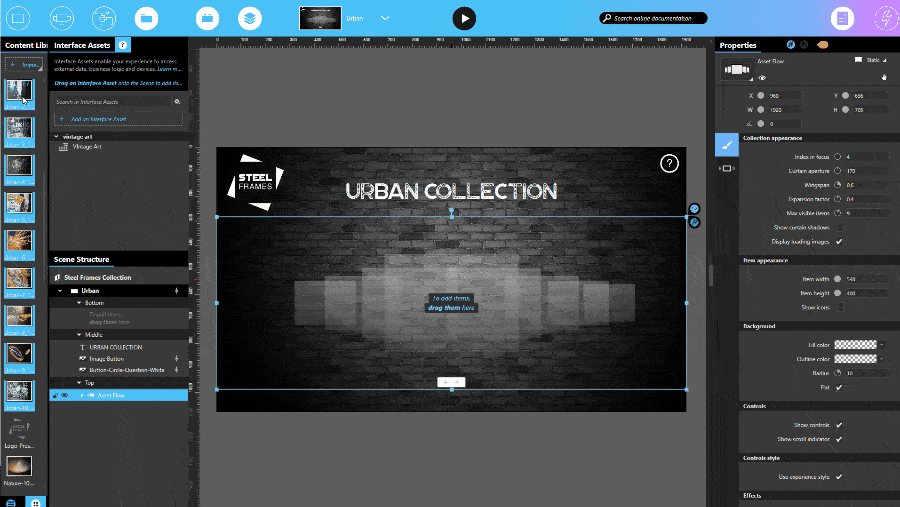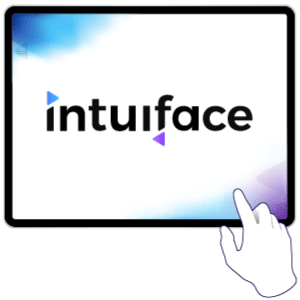What is Digital Signage? | The Most Accurate Definition

As digital signage increasingly impacts our lives and presents opportunities for the business world, its capabilities are also evolving from a passive system that pushes content to a more advanced system that connects, interacts, and pulls content from diverse sources in real-time.
What is digital signage?
Digital signage is a digital installation that displays video or multimedia content for informational or advertising purposes. We see it everywhere. We’ve gazed at advertisements at bus stations, found gate information at the airport, ordered food in fast food restaurants, bought movie tickets, and pulled up directions at museums, all thanks to digital signage. There are endless uses supporting a diversity of businesses and audience needs. In fact, the digital signage market is expected to grow from USD 20.8 billion in 2019 to USD 29.6 billion by 2024, numbers hinting at the enormous impact and potential lying within. As digital signage increasingly impacts our lives and presents opportunities for the business world, its capabilities are also evolving from a passive system that pushes content to a more advanced system that connects, interacts, and pulls content from diverse sources in real-time.
How do you define what digital signage is?
In this article explores the definition, scope of use, and potential of digital signage.

What is the definition of digital signage?
Let’s try to get our heads around it. Wikipedia writes that “digital signage” is a subcategory of electronic signage, which, in turn, is defined as display technologies such as LCD, LED, projection, and e-paper. That’s fairly unhelpful. Digital Signage is much more than just the hardware. Understanding today’s digital signage requires consideration of its roles, functions, and technical capabilities.
What we can say is that digital signage is comprised of three key components:
- Digital Signage Content - An inventory of audio, video, image, graphics, text, and more, assembled to tell unique stories for any number of unique intents.
- Digital Signage Hardware – The physical, tangible components like screens, mounts, payment devices, printers, cameras, etc.
- Digital Signage Software – The digital infrastructure enabling the creation, deployment, management, and analysis of content deployed on the hardware.
Let’s break these three components down.
What is digital signage content?
What is digital signage content? The simple notion of content is anything displayed on a screen, including text, images, animations, video, and audio. However, “content” can also refer to the collective result of combining various media to tell a story. Here it’s about the overall experience imparted to the target audience. Dynamic digital content entices visitors or passers-by to stop, captures and engages them via interaction, and collects information for business insight. Such digital sign content can even be personalized in real-time through integrations with back-office systems.

Types of Digital Signage
There are various examples of digital signage that engage your guests. Here are some examples of the most common types of digital signage, based on usage scenario:
- Public Signs- location-specific information (news, weather, traffic, etc.), maps, wayfinding
- Corporate Signage- knowledge sharing, meeting room booking, meeting coordination, training
- Sales Signage- product/service portfolios, whiteboarding, demonstrations
- Tourism & Wayfinding Signs- wayfinding, points of interest, city information
- Retail Signage- self-check-out, endless aisle, product showcase, smart mirror
- Restaurants Displays & Signs- self-service, digital menu board, self-ordering kiosk
- Marketing Signs, Motion Graphics & Ads - promotions, ambiance, gamification
- Museums Signage - gallery, wayfinding, digital tours
- Education based Signage - classroom teaching, wayfinding, library exhibitions
- Exhibit & Tradeshow Displays & Signs- interactive product/service catalogs, visitor registration, networking
What is digital signage hardware?
Digital signage hardware includes digital displays, digital media players, projectors, and audio systems.
Digital signage screens come in various sizes, resolutions, brightness, and support for interaction. Examples include LCD/LED flat panels, projection screens, touchscreens, and more. These display systems can be connected to digital media players, which contain the operating system and software applications used to run digital signage content. Some digital media players can be installed into the rear of a display or mounted externally on walls or stands with specialized brackets. Some displays are all-in-one, embedding the processor and supporting infrastructure, and do not need an external media player.

The digital signage network can also be enhanced by other hardware such as environmental sensors; consoles for user input (keypad, mouse); printers; modems; cameras; readers (RFID/NFC); WiFi routers; digital signage enclosures for outdoor installation and security; digital-to-analog converters (DACs); digital audio streaming devices; and more.
Interactive Digital Signage Hardware
Let's focus on the interactive aspect of the hardware for a bit. Multi-touch displays are the most popular form of interactive digital signage hardware. These multi-touch screens enable users to interact with content simply by touching the display. The user intent could be to access information, play games, or complete transactions such as payments.
Other interactive modalities include sensors for motion or gesture, computer vision for gender and age recognition, voice to enable control through speech, and RFID readers that detect physical items and provide additional information about them. These technologies can deeply enhance engagement and increase usage, such as in retail stores where customers can get more information about products when they scan them using an RFID reader or touch a screen with a specific item for extra details.
Overall, interactive digital signage hardware enables businesses to engage their customers in meaningful ways while collecting data - in the context of the interaction - that can be used to gain valuable business insights. The right hardware can make a big difference in how effective and engaging a solution is for your customers. Digital signage hardware should not only be chosen for its functionality but also for its aesthetic appeal. It is an extension of your brand, after all!
What is digital signage software?
What is digital signage software? If you’ve ever googled “digital signage software” and paid attention to what those countless vendors offer, you’ve probably felt that they all seem to be talking about the same thing. Truth be told, it is not easy to give an overarching definition of Digital Signage Software because many software options offer different extents of capabilities and therefore are suitable for different purposes.
However, we can compromise by describing what an ideal digital signage software solution would look like. Digital sign software should enable its users to easily create digital signage experiences with the option of incorporating interactivity, integration of hardware and third-party services, and data collection for analytics. It should offer total freedom for multimedia format selection and permit any design, layout, or storyboard. It should facilitate collaboration and remote deployment.
Broadly speaking, digital Signage software is comprised of four primary functions:
- Content Creation
- Content Management and Distribution
- Device/Player Management
- Performance Measurement
What is the future of digital signage software?
Today, signage innovation is primarily occurring in the world of software. Here are three areas to watch for.

Interactivity Beyond Touch
“Touch is not the only medium of interaction.”
The future generation of digital signage incorporates interactivity. In addition to the above-mentioned device technologies, digital signage software will enable us to work with virtually any interactive approach you can imagine, including:
- Speech recognition
- Motion sensors
- Tangible objects
- Demographic-based interactions
- Remote Actions
- Gesture Recognition
It’s human-machine interaction of any kind, accessible to any team who desires to create highly engaging content uniquely suited for particular environments and targeted demographics.
Connect to the World
“What you see - and can’t see - is what you get”
Most digital signage software solutions in the market present themselves as a Content Management System (CMS), offering a dedicated User Interface (UI), enabling users to upload and manage content that is then distributed to a media player. Will this trend remain in the future?
The answer is “Yes, but”
CMSs aren’t going anywhere, but future digital signage solutions will connect and retrieve content from any number of third-party sources. Whether the content is local or in the cloud, the advantage of this approach is that it expands the scope of content and the type of information that can be added to a digital signage experience.
Some examples of third-party sources that can serve as data providers and consumers
- Offline sources: Microsoft Excel
- Stand-alone CMS: Airtable, WordPress, Directus
- Social media: Twitter, RSS feeds, Flickr images, etc.
- Third-party services, apps, and devices: IFTTT and Zapier
- Any data source, business logic, or device accessible via an API
The experience is the sensor
“Digital experiences can be a sensor. If true, this turns the world of digital signage upside down.”
As mentioned earlier, digital signage solutions can pull information from diverse sources to enhance engagement with a target audience. Audiences express preferences and interests through personalized interactions enabled by device technologies such as gender-detecting webcams, RFID/NFC readers, or QR codes. Now imagine the value to be mined here if digital signage could log all interactions - items selected, videos played, scenes visited, and more - combined with contextual information like location and weather.
Digital signage will no longer simply be a means of displaying content. It will become a sensor that captures information about the audience and their behavior patterns. The result is not just signage but a window to your audience, an analytics solution delivering design, operational, and business insight.

Conclusion
Digital signage is evolving rapidly. Software is what continues to drive innovation and what will ultimately shape the future of digital signage. As the technology progresses, expect to see increased interactivity, connectivity with other systems, and the use of digital experiences as a sensor. All these benefits create more powerful opportunities for businesses to deliver unique experiences that engage customers while gathering valuable data points. This is what’s ahead in digital signage software – an exciting time that promises breakthrough capabilities and insights into what consumers truly want.





